Last year Gwen Casey was finishing up her senior year at Northside College Prep — and doing it all from home in front of a computer.
“That was kind of hard because it didn’t have the same feel as the classroom and being able to lean over and ask someone a question,” she said.
But she also vaguely remembered that this wasn’t the first time Chicago school kids had to do remote learning.
She recalled reading an article about Chicago officials experimenting with teaching school over the radio during a polio outbreak in 1937. To keep kids safe, the Board of Education shut schools and broadcast lessons over radio stations to homebound kids. Although schools reopened in less than a month, the radio lessons were seen as such a big success that the Board of Education decided to keep making educational shows. Eventually, they created their own station for them — WBEZ— which went on the air in 1943.
In its first decade on the air, WBEZ’s programs focused on history, geography, math and storytelling. In the 1950s and '60s WBEZ continued to air many of those same shows but also added programming focused on teens. Then, in the 1970s a new director took over and began making big changes to the kid focused programs — while also adding news and music to the station’s line up. Eventually, news programming took over the station, and in 1989 WBEZ ended its last youth program. About a year later the station would completely sever its ties to the Board of Education.
On this week’s podcast we dive into this history with interviews and some rare recordings of old shows.
But during our reporting, we also dug up some old photos, radio programs and other documents that help illustrate WBEZ’s history teaching kids through radio. We share some of those images and documents with you below:

When Chicago closed schools during a polio outbreak in 1937, the Chicago Board of Education created audio lessons in history, math, science and reading for students from third through eighth grade. The Board asked commercial radio stations to broadcast these lessons to students trying to learn at home. Local newspapers joined in the effort by printing class schedules in the daily paper.
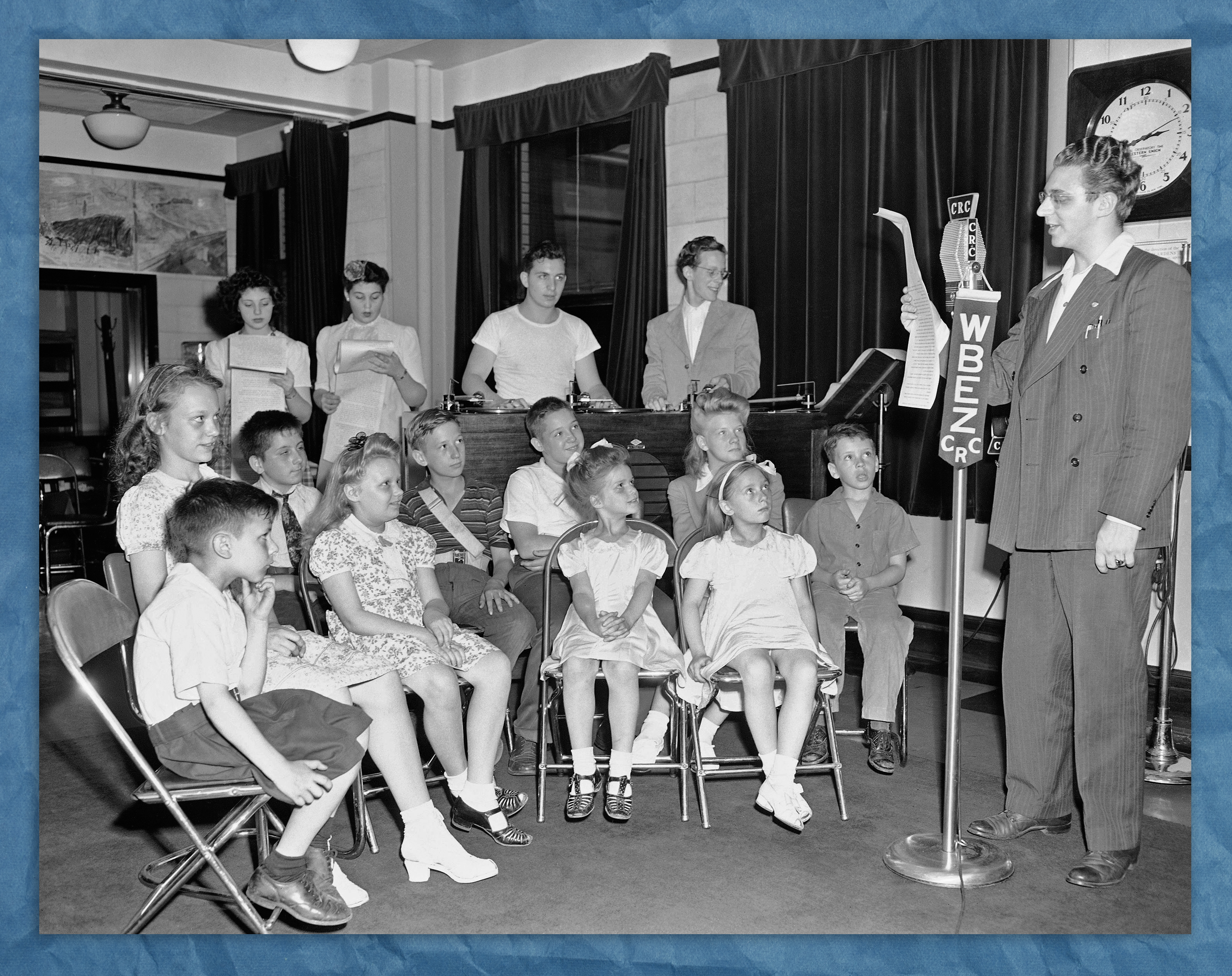
Starting in the 1940s WBEZ station manager George Jennings aimed to get students more involved in the broadcasts by inviting them to the station to participate in programs and even learn radio production. Above, WBEZ’s Mel Maas broadcasts the day's news while students from Peabody Elementary School visit the studio located at the Board of Education on LaSalle Street in 1944.

In this photo from 1944, high school student Edward Stern (left) helps WBEZ assistant producer Mel Maas (right) prepare news for a WBEZ broadcast on October 15, 1944. Stern was a member of the Chicago Radio Council’s Central Radio Workshop, where students used AP news bulletins to learn to create news broadcasts.

Every Friday for nearly 20 years, Chicago students came to WBEZ studios to compete in Battle of the Books. Students would study a certain group of books, based on Chicago Public School reading lists and be quizzed about them live on the air. Some teams even had cheerleaders. The concept spread across the country and students still compete in Battle of the Books today, although not on the radio. In this photo, competing teams sit at the table to the left, while Chicago School Libraries supervisor Dilla MacBean and radio host Ruth Harshaw sit at the table to the right. Behind them is a studio audience made up of teachers, librarians and students.
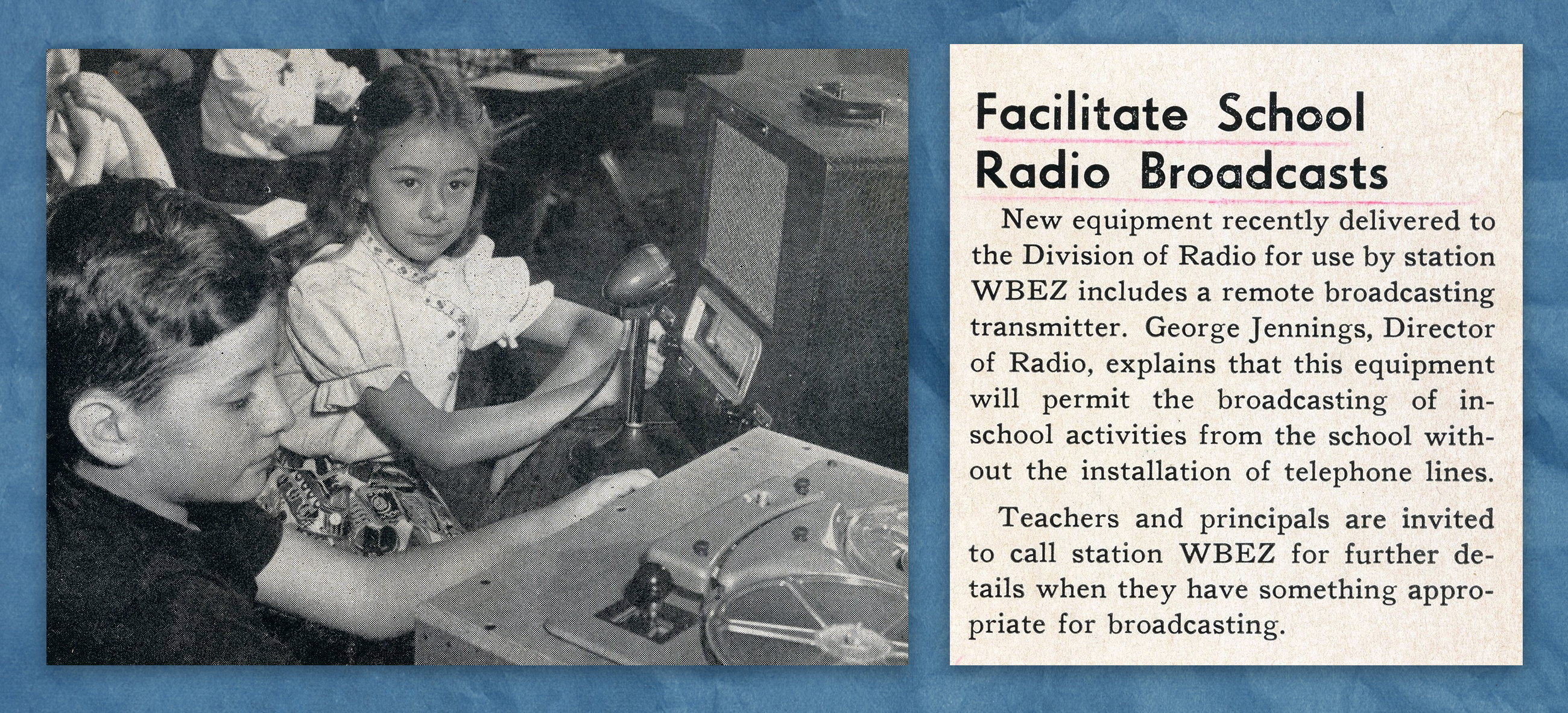
In 1951 WBEZ station director George Jennings acquired a remote broadcasting transmitter that could broadcast activities from schools through the radio. Schools were advised to contact WBEZ when they had “something appropriate for broadcasting.” Jennings was eager to get kids engaged in making radio.
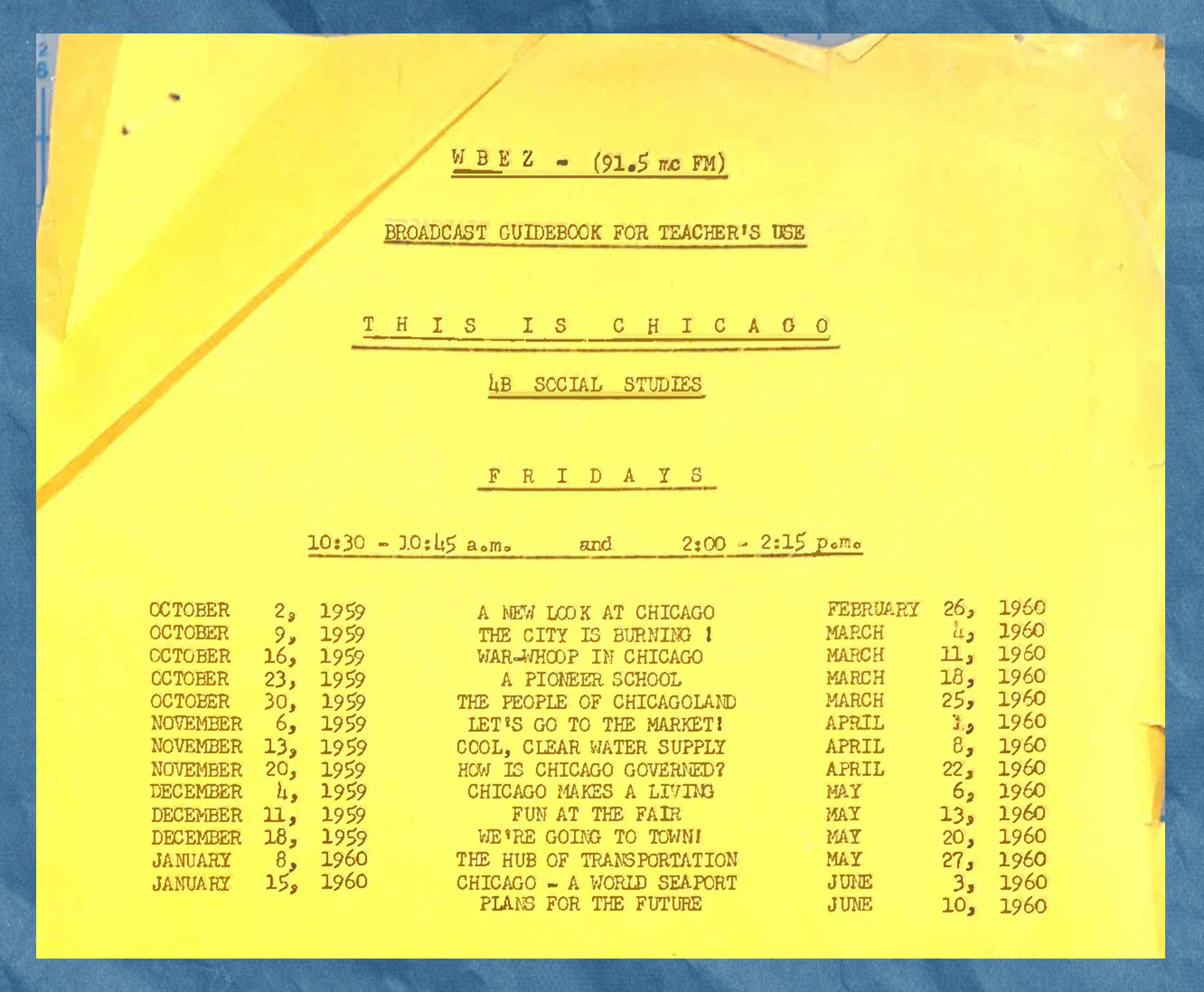
In the 1959-1960 school year, teachers were offered a program to supplement their social studies classes called “This is Chicago.” The show included episodes on the Chicago fire, Lake Michigan, the World’s Fair, Chicago government and more. Each episode lasted 15 minutes, leaving time for teachers to quiz students on the lesson they just heard. Lessons were aired weekly for the duration of the school year.
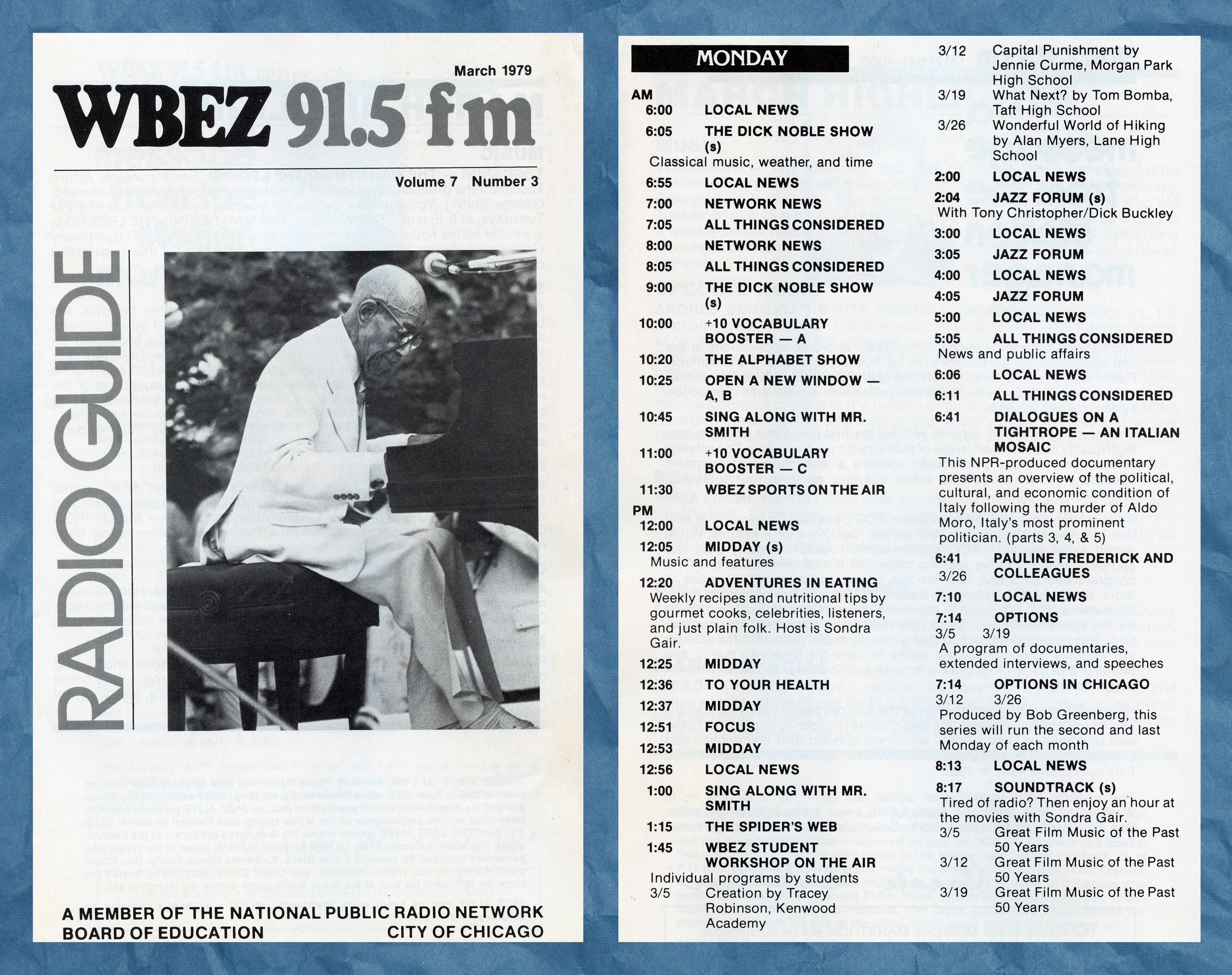
This WBEZ program schedule from 1979 reflects the type of programming that was on the air — a mix of all kinds of educational shows as well as music and news. National Public Radio’s “All Things Considered” aired in the afternoon and then re-aired the next morning. But the school day was filled with a hodgepodge of children’s singalongs, storytelling, music appreciation lessons as well as local news, jazz programming, sports reporting, a documentary on Italian politics and a food show called “Adventures in Eating.”
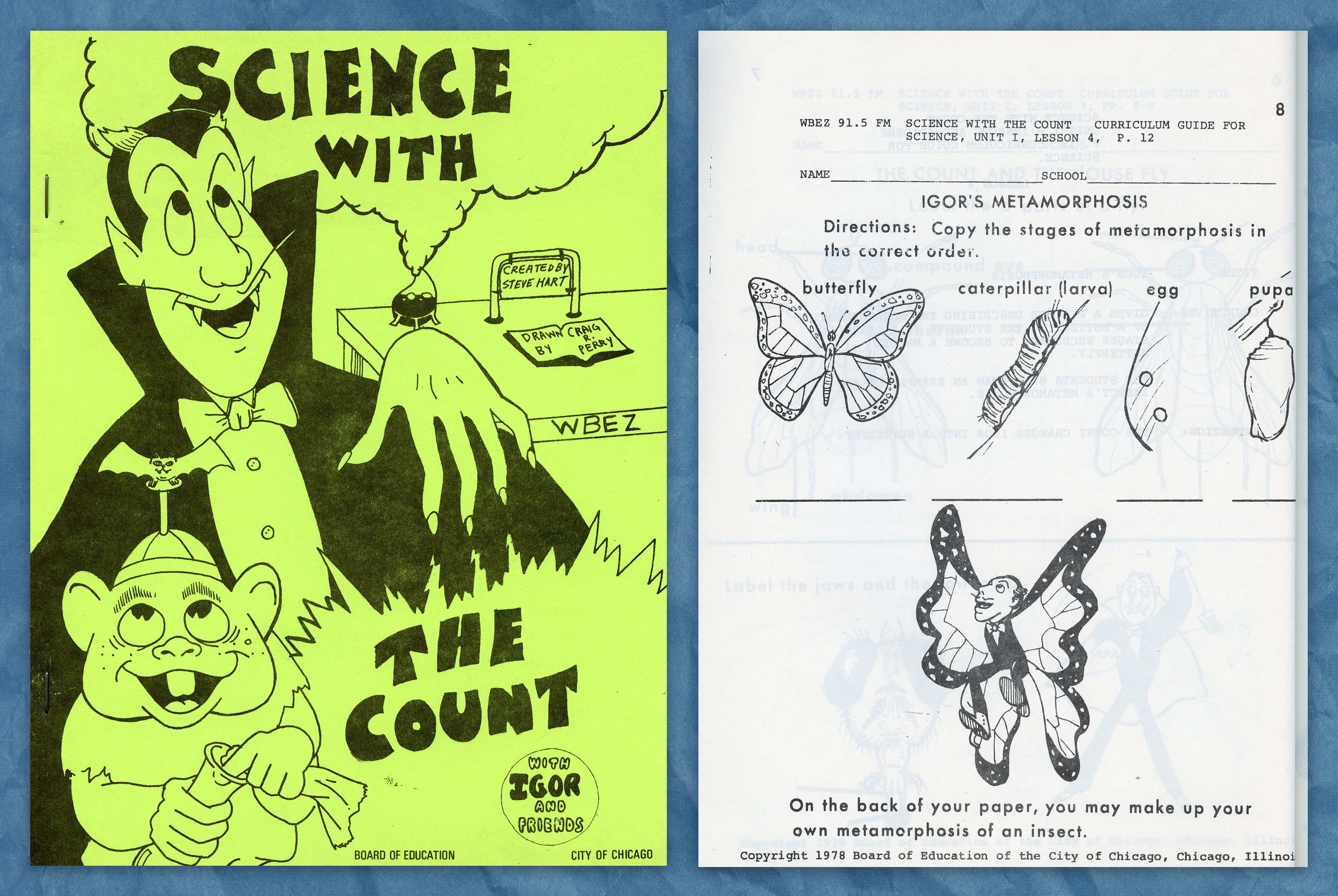
In the 1970s, WBEZ station director Carole Nolan hired teacher and ventriloquist Steve Hart to create more contemporary educational programming for the station. He teamed up with engineer and (later) host, Craig Alton to voice the show with zany skits and songs about scientific principles like metamorphosis. Each classroom that used the series got workbooks with lessons and questions that accompanied each weekly episode. Teachers could also request cassette tapes of the shows to play at more convenient times.

In the late ’70s and early ’80s WBEZ brought kids back into the studio to learn radio production and help make shows. Grade school students from across Chicago worked on a show called “Audio Jam Live” that featured kids talking about subjects — like candy — that interested them. They also got to do live phone interviews with stars of the day including Vincent Price and Diana Ross.

In 1984 Craig Alton (above left with beige hat and mic) and Steve Hart (above right with mic) launched a kids show called “Zoo Party,” which broadcast live on Saturday mornings from Lincoln Park Zoo. The show was performed in front of an audience and took calls from kids all over the country. The hosts interviewed zoo staffers as well as local theater performers who came down to the zoo. Those local actors included Steve Carrell (in black) and actress Joan Allen (in black on the right).
More about our questioner

During her time at Northside, Gwen noticed several dead or injured birds who’d collided with the building’s huge windows.
“It was a big problem,” she said.
This inspired her to spend part of this gap year volunteering with Chicago Bird Collision Monitors.
“Every morning during the spring and fall [migratory season] we get a route — mine is around Madison and Wacker — and we walk them with plastic bags and a net,” she explains.
Volunteers collect birds along the route, sending the injured ones to a rehab center and the dead birds to the Field Museum for research.
Gwen said most of the birds she finds are dead but some are just stunned and alive. She’s also been surprised by some of the species she’s encountered downtown.
“The other day I found a green heron, which I had never seen before,” she said.
Gwen plans to study environmental science or biology when she attends Carleton College in the fall.
Monica Eng is Curious City’s reporter. You can reach her at meng@wbez.org


